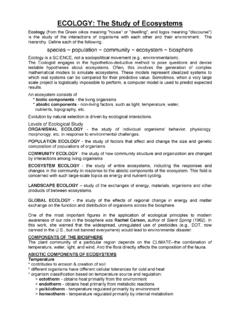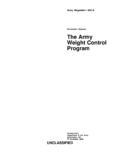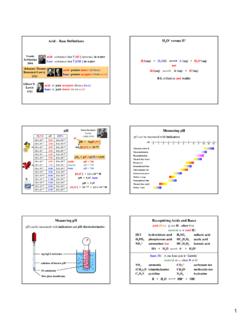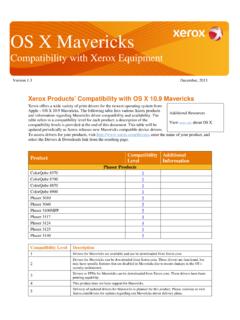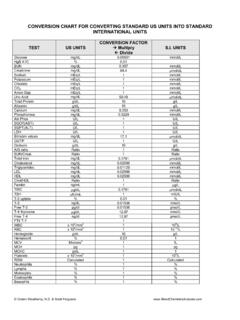Transcription of Appendix V Scientific Notation and the Metric System
1 A5-1 Appendix V Scientific Notation and the Metric System I. Scientific Notation . Recall that in the mathematical expression "23" the number 2 is called the base and the number 3 is called the exponent. This expression is read as "two to the third power." To determine the number indicated by this expression, simply multiply the base (2) by itself the exponent (3) number of times. Hence, 23 = 2 x 2 x 2 = 8 Scientific Notation is a concise, convenient way to express very large or very small numbers. The number 10 is used as the base. For example.. 106 = 10 x 10 x 10 x 10 x 10 x 10 10-6 = 1 10 x 10 x 10 x 10 x 10 x 10 2 x 106 = 2(10 x 10 x 10 x 10 x 10 x 10) x 10-6 = x 1 10 x 10 x 10 x 10 x 10 x 10 Of course, there are easier ways to calculate the actual number written in Scientific Notation besides multiplying everything out.
2 Simply remember that the exponent designates the number of places to the right or the left one must move the decimal point to achieve the actual number. When the exponent is positive, the decimal point moves to the right When the exponent is negative, the decimal point moves to the left. 1 x 102 = 100 x 103 = 4850 x 10-4 = x 10-3 = Practice converting the following to and from Scientific Notation : 250 = x 10-6 = 2550 = x 103 = 40264100 = x 108 = = x 104 = = x 10-5 = A5-2 II. Metric units of measurement In Scientific writing, it is proper to use Systeme International (SI) units of measurement. These include such internationally accepted units as the meter and the gram. The SI is commonly known as the Metric System . Now that you are an expert at Scientific Notation , it should be easy for you to convert from one Metric unit to another.
3 Several fundamental Metric units of measure are listed in Table A5-1. Study these before you continue reading. Table A5-1. Above, some common units of measure from the Systeme International. Below, the proper prefixes for fractions and multiples of the international units. Because you will be using these units and prefixes for the rest of your Scientific career, you should learn them now. International units of measure physical quantity name of unit symbol length meter m mass gram g time second s temperature Kelvin K amount of substance mole ( x 1023 ) mol Fractions of international units Multiples of international units fraction prefix symbol multiple prefix symbol 10-1 deci d 10 deka da 10-2 centi c 102 hecto h 10-3 milli m 103 kilo k 10-6 micro 106 mega M 10-9 nano n 109 giga G 10-12 pico p 1012 tera T Thus, according to Table A5-1: 1 meter = 102 cm conversely, 1 cm = 10-2 m 103 mm 1 mm = 10-3 m 106 m 1 m = 10-6 m 109 nm 1 nm = 10-9 m 1010 Angstroms ( )* 1 = 10-10 m 1012 pm 1 pm = 10-12 m 10-2 hm** 1 hm = 102 m 10-3 km 1 km = 103 m *An Angstrom is one several SI units bearing a special name not based on the word "meter.
4 ". **A hectare is 100 square meters, and serves as the Metric analog for an acre. Converting from one unit to another is not difficult! Just remember to write down all units and cancel as you calculate. For example: 1. To convert 56 nm to meters, multiply: 56 nm x 1m = x 10-8 m 109 nm 2. To convert cm to m, multiply: cm x 1m x 106 m = x 104 m 102 cm 1 m A5-3 Try some yourself. Convert 1. cm to m: 2. mm to nm: 3. nm to Angstroms: 4. nm to m: 5. 34 m to mm: If you were educated in the United States or Great Britain, you are probably more familiar with the British System of measurement than you are with SI units. To help you relate to Metric units more easily, we provide table A5-2, which lists conversions for several physical quantities commonly used in the biological sciences.
5 Whenever necessary, refer to this table to convert laboratory data to SI units. This is especially important if you are writing a Scientific paper. Table A5-2. Conversion factors for some commonly used units of measure. Read the table as a matrix. For example, if you wish to convert feet to meters, go to the row labeled "foot" and look across to the column labeled "meter." In this example, 1 foot is equal to meters. Physical Quantity: distance foot (ft) inch (in) meter (m) centimeter(cm) 1 foot = 1 inch = x 10-2 1 meter = 1000 1 centimeter = x 10-2 10-2 mass pound (lb) ounce (oz) kilogram (kg) gram (g) 1 pound = 1 ounce = x 10-2 1 kilogram = 1000 1 gram = x 10-3 volume quart (qt) fluid ounce(oz) milliliter (ml) cubic cm (cc) quart = 32 943 943 fluid ounce = x 10-2 milliliter = x 10-3 x 10-2 cubic centimeter = x 10-3 x 10-2 temperature Kelvin (oK) Farenheit (oF) Celsius (oC) 1 oK = 9/5(oK) - oK + 1 oF = 5/9(oF) + 5/9(oF - 32) 1 oC = oC - 9/5(oC) + 32 note: absolute zero (oK) = oC


